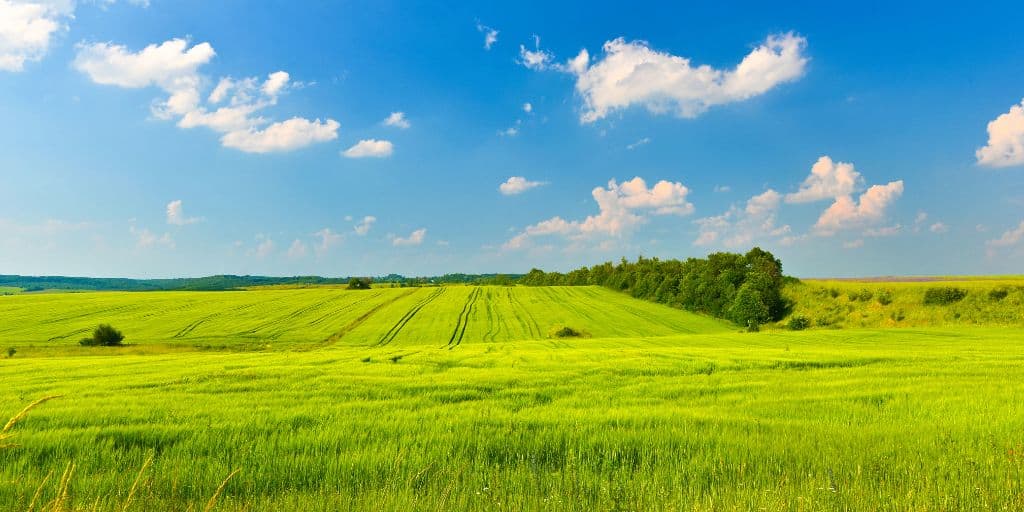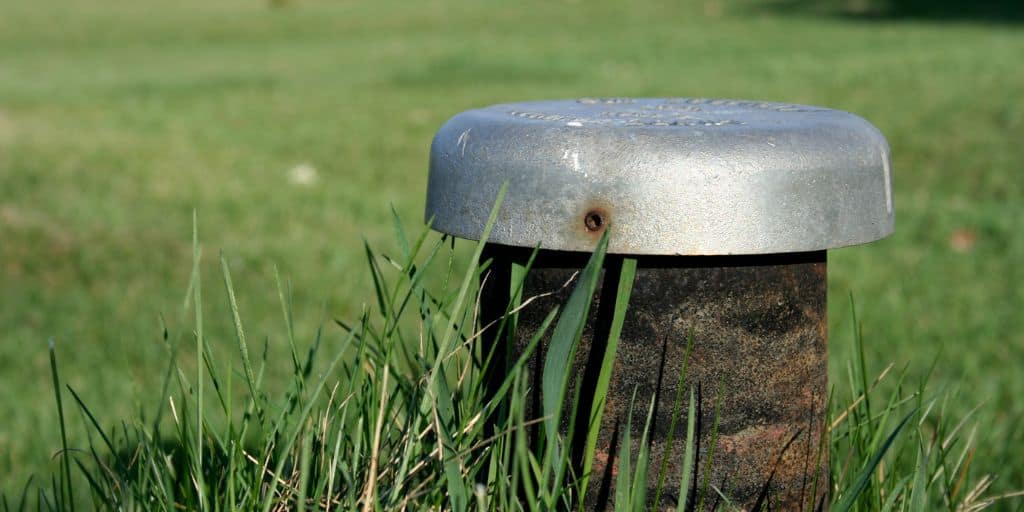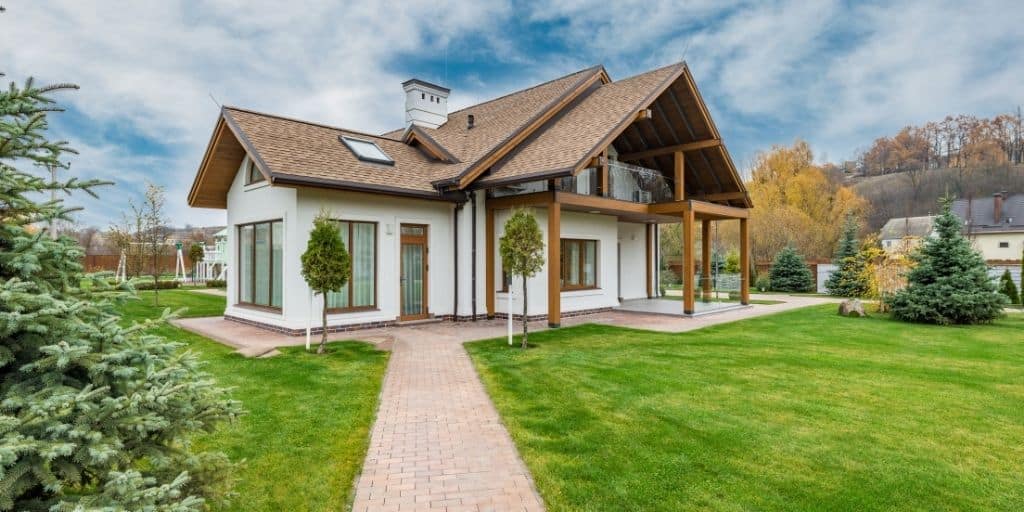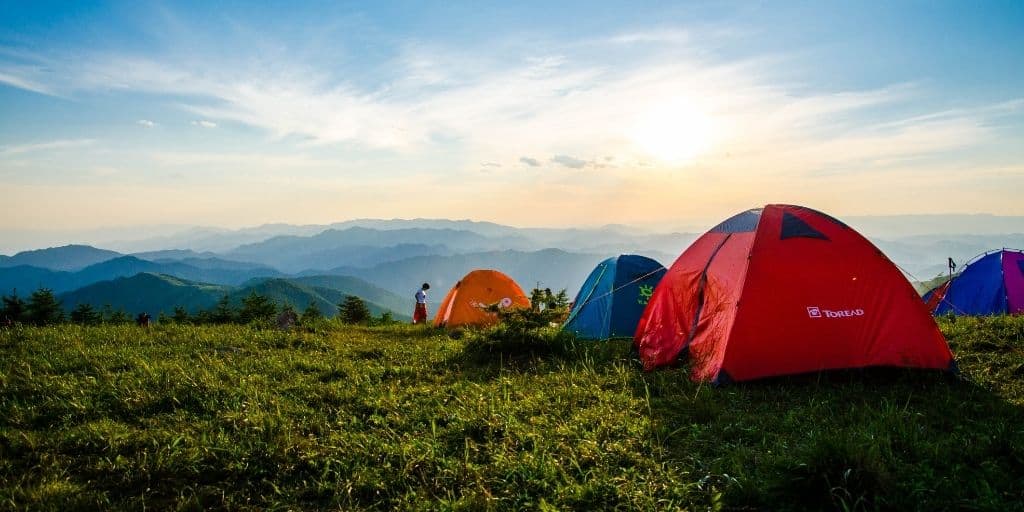
We’ve all seen McMansions squeezed onto tiny lots, with a sad little strip of grass marking the border between lots. In some cases, residents can reach out the window and high-five the neighbor through their window.
Anyone looking to buy vacant land and build on it needs to know: just how much land do I need? Is an acre enough? Half an acre? Two acres?
It depends on your plans and goals, of course. You need a lot more land if you plan to build a farmhouse and work the land than you do for a manufactured home in the suburbs. But since it depends isn’t a very satisfying answer, let’s dig a little deeper into how much land you need for various building types and uses.
Measuring Land: A Quick History of the Acre
The acre dates back to Roman times, as a measurement of 40 rods by 4 rods—the area that a yoke of oxen could typically plow in a day. That comes to 660 feet long (a furlong) by 66 feet wide in today’s units. Oxen could plow a single furlong without taking a break, and could repeat that length four times in a day. Tuck that away for your next trivia night.
One acre equals 43,560 square feet. People love to compare it to a football field, excluding the end zones, as an easy way to visualize it. Football fields are a bit bigger at 48,000 square feet, but the analogy is good enough for a rough estimate.
If you prefer tennis whites to gridiron pads, an acre can fit around 16 tennis courts (with each tennis court at about 2,808 square feet).
It sounds like a lot of land, but it doesn’t feel that way when you have noisy neighbors. While you could theoretically fit 43 homes at 1,000 square feet apiece in acre (with almost no space between them), most subdivisions build three to four homes per acre.
How Much Land Do I Need to Build a House?
The average ratio of land to home footprint ratio in the U.S. is around 3:1.
In other words, if you buy a lot with 3,000 square feet, a typical home footprint might take up 1,000 square feet.
But most homes with a land-to-building ratio that low exist in suburban developments. New single-family subdivisions feature an average lot size of 8,456 square feet, under a fifth of an acre. For townhouses, it’s even lower.
If you plan on building a custom home, you probably want closer to an acre. But the exact amount you need depends on a few other factors.
Water and Sewer Lines
Lots with existing water and sewer line access don’t need as much land for residential homes, as they don’t need a well and septic system or new plumbing lines to connect to city water and sewer.
The American Planning Association recommends at least a half acre of land if the lot doesn’t have water and sewer hookups. If the lot has one but not the other, they recommend at least a quarter acre of land. If the lot has both, less than an acre can suffice.
Remember, if the property doesn’t have access to public sewer lines, you’ll need to do a perc test before getting zoning approval to build a home. Consider it part of the due diligence process before buying a lot for building.
Zoning Regulations
When you build a home (or anything else, for that matter), plan on plenty of headaches from your local zoning board.
Among the simpler zoning regulations, some municipalities require a minimum land to building ratio, or a minimum perimeter of land between buildings and property lines. Alternatively, they may mandate minimum lot sizes for building.
Zoning requirements can get more complicated from there, but for determining how much land you need to build on, start by contacting your local zoning office.
Land Required for Other Buildings
Want to build more than just a single-family house?
Here are a few other types of buildings you might consider.
Accessory Dwelling Units
Instead of building just a house to live in, you could build an extra outbuilding as an in-law suite or income suite. Real estate professionals call these accessory dwelling units or ADUs, and you can rent them out long-term or to short-term Airbnb guests as a way to house hack.
Or, if you’re a glutton for punishment, you could house your in-laws there for free.
While ADUs don’t necessarily require a huge footprint, you still need to plan for them. That includes not just allotting space but also checking on zoning regulations and getting building permits.
A quarter-acre plot will start feeling awfully claustrophobic for two separate buildings. If you’re buying a relatively small lot, you can look into installing a tiny home as an ADU.
Garages
Adding a garage, whether detached or as part of your home’s structure, will bump up the building footprint too.
For smaller lots, consider attached garages first. It’s a more efficient use of land, and you can always price out adding an above-garage apartment as its own ADU.
A single-car garage requires a minimum footprint of roughly 14 feet by 20 feet. For a two-car garage, count on at least 20 by 24 feet. More space makes the garage more comfortable and easier to use, though.
Talk to as many builders as possible about costs, layout, and how much land they recommend for adding a garage to the lot.
The more land you buy, the greater your options for detached garages. Beyond parking cars, you could potentially park boats or RVs, or create a larger and more private above-garage ADU. You can rent out parking spaces for RVs or boats, or rent out all or some of the garage for storage space.
Which, as it turns out, is a concept you can scale.
Self-Storage Facilities
You can construct a commercial building such as a self-storage facility with enough land.
Self-storage units require minimal wiring, no plumbing, and often no heat or air conditioning. That makes them extremely simple structures to build and maintain.
It’s much faster and cheaper to evict renters who default on self-storage rents than residential rentals. You can automate much of the management to minimize labor.
Self-storage investments often feel more like an automated business than a real estate investment. The greatest challenge is often just marketing to maintain high occupancy rates.
As a business, you shouldn’t enter it lightly. Read up on due diligence before building a self-storage facility, and check your local zoning requirements for land-to-building ratios or perimeters for self-storage facilities, along with permitting requirements.
How Much Land Do I Need for Farming?
The amount of land you need for farming depends on the type of farming you want, the soil quality, and, of course, the yield you want.
An acre of land could serve you just fine if you wanted to keep a small chicken coop and vegetable garden to supplement your food supply. Technically, an acre of land can produce 50,000 pounds of strawberries or 2,784 pounds of wheat, according to the U.S. Farm Bureau. But that’s at industrial capacity, not hobby farmer capacity.
Still, you can do a lot with an acre. Check out what Weed ‘Em & Reap did with a single-acre farm.
Most people looking to start a farm probably want more than an acre. For raising livestock, for example, check out Texas A&M’s guide to acreage requirements.
If you want to farm professionally, speak with a local consultant about the type of land, the location, and the type of farming you want to do.
Land Needed for Recreational Use
You can do a lot more than farming with land investments.
Love four-wheeling? Dirt biking? Mountain biking? Snowmobiling? Paintballing? Buy some land! You can potentially monetize it for recreational purposes, too. Read up on creative land uses here.
A few more common recreational land uses include the following.
Camping
If you want to camp on the land, you don’t need much of it. You can throw a tent up on a few square feet of space. But you do need to think about road or hiking access, and local land features such as forests, rivers, trail networks, or nearby state or national parks.
Alternatively, you might want to build a small cabin or park an RV, trailer, or tiny home on the land for camping. The regulations are lighter for tiny homes and trailers on wheels rather than permanent foundations—read up on each state’s laws here.
Again, you don’t need much land, but you do probably need road access. And if you build a cabin, you probably need a building permit from the local government.
Fishing
Fishing potentially requires more land. If you plan on fishing a stream or river that runs through the property, you don’t need much land, but you do want to research the risk of someone developing the land upstream and destroying the ecosystem or river health.
If you buy a land with a pond or lake, the general rule of thumb is that you need five acres of surrounding land to keep one acre of water healthy. You can also create your own pond, if you have supportive soil such as clay. But that’s a bigger undertaking—consider getting professional help for creating your own fishing pond.
Hunting
Hunting requires significant land, if you don’t want to get charged with manslaughter over an errant round.
That said, how much land you need for hunting depends on the type of game you plan to hunt, the weapons you plan to use, and the number of people you plan to hunt with. Rifle hunting for deer often requires 50 acres at least, compared to as few as five acres for turkey hunting with shotgun slugs.
Land parcels that abut national or state parks that allow hunting can help reduce the acreage you need. You can also potentially negotiate hunting rights with like-minded owners of neighboring parcels.
Make sure you research the land features needed for good hunting in your area and for your target game. Water on the property helps, as does shelter for the animals such as forest cover.
Most of all, do your homework on local hunting ordinances and regulations.
Where to Find Land to Buy
To begin with, some real estate agents specialize in selling land. Read up on how to use Realtors to buy land for more details.
There are also websites dedicated to listing land for sale. Check out LandHub, LandWatch, Lands of America, and LandFlip as specialist marketplaces for buying and selling land. For that matter, you can also find land for sale on household real estate site names like Zillow, Trulia, Realtor.com, and even Craigslist.
Professional land investors look for off-market deals, such as contacting owners with direct mail. Check out our interview with Callan Faulkner for some more creative ways to source land deals.
Final Thoughts
Depending on where you buy and what you plan to use it for, you can sometimes buy land for cheap.
Before you get too far along in the buying process, start by learning basic land terminology. It helps to know the lingo, when you’re planning investing tens or hundreds of thousands.
Finally, remember there are few rules written in stone for how much land it takes to build. It largely depends on your plans for the property, and of course the local zoning regulations. When in doubt, talk to zoning officials and developers long before putting a parcel of land under contract.







